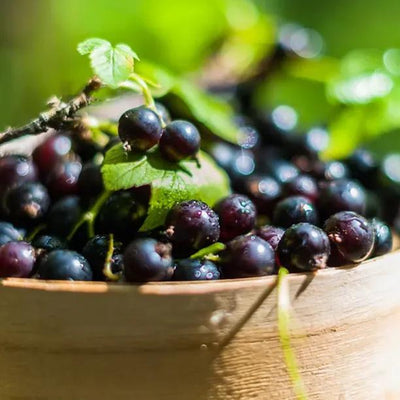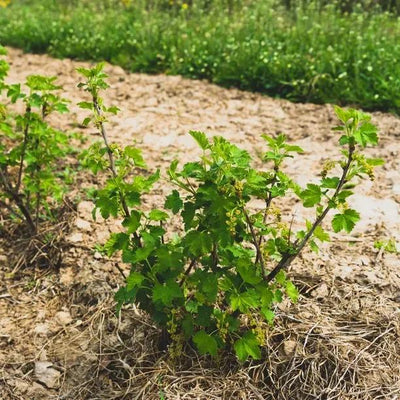Buying Berry Bushes Online:
Order Potted Soft Fruit Bushes Now For September Delivery
Pre-Order Bareroot Fruit Bushes For 2025/26 Winter Planting Season
You can grow your whole soft fruit cage from the dozens of berry varieties we grow.We grow almost all our soft fruit here in the UK, and our varieties are chosen to eat off the bush, cook or freeze.
Except for the Blackberries, Blueberries and Hybridberries, most of our stock is available bareroot.Bareroot stock is cheaper than its container grown equivalent, and it is only delivered in winter.
Our stocks of potted soft fruit bushes always get snapped up quickly, so order early to avoid disappointment.
All Soft Fruit Plants are VAT Free.
Your mail order berry bushes are delivered by next working day courier.If there is anything wrong with your plants when they arrive, Contact Us within 5 working days, and our friendly support team will sort it out.
All bareroot plants are covered by our Refund Guarantee, so you can give them a whirl with complete confidence.
Berry bushes are mostly very easy to grow: fertile soil, good drainage and plenty of sun is ideal, and you can still get decent crops from Blackberries, Raspberries and Hybrid Berries in pretty poor conditions.
Choosing a Soft Fruit Collection
Soft fruit are at their best fresh, so a long cropping period for your collection is extra important.If you have space for only a few plants, then go for the heaviest croppers, but ideally grow get a range of early, mid-season and late cropping varieties so that you can enjoy fresh off the bush berries over several months, instead of getting a glut in one go.
The smaller and the less sweet the fruit is, the better it will do in the shade, which in practice means cooking varieties over eating ones.If your site is challenging in every way, Blackberries are your best option for shady, damp and poorly fertile places. Strawberries do need sun to fruit well, but because they spread so rampantly they make useful ground cover.
Plan to grow Soft Fruit for 4
Get just the right amount for your family over summer, covering eventualities like rhubarb crumbles, redcurrant jellies, loganberry jams, raspberry Eton Mess, strawberry ice creams, gooseberry sauce, blueberry smoothies, and blackcurrant coulis.
Soft fruit freezes well, cooked or raw.
March to April: Harvest your first rhubarb stems
May: Early gooseberry is high in pectin for jam, makes good sauce for Mackerel. Strawberries grown undercover are ready.
June: More rhubarb. Gooseberries can be eaten straight from the bush. First raspberries, blueberries, more strawberries in time for Wimbledon.
July: Peak month. Strawberries ideal for cobblers, muffins and muesli. Eat raspberries fresh. Blackberries starting now, until September. Currants through to August.
August: Last currants, more blueberries, and plenty of raspberries.
September: More raspberries. Last blackberries in time for apples. Late strawberries
October: Last raspberries, last strawberries.
How to Plant & Look After Soft Fruit
All soft fruit bushes will perform at their best with close to a full day of sun, fertile soil with good drainage, and shelter from the wind. Apart from strawberries, which really need sun (alpine wild strawberries like Leo Alba are the exception), they mostly tolerate shade well. The more shade there is, the smaller the crop will be. You can improve the crop quality by thinning it, removing the weakest looking fruit. Blackberries, Tayberries and Loganberries are recommended for the shadiest conditions.
Soft fruit have shallow, spreading roots. So shallow that you shouldn't trample the soil around your raspberry bushes in summer if you can help it, because you'll damage the roots while they're busy feeding your crop. It is therefore easy to improve the top layer of soil for them, or create low raised beds. A low raised bed for soft fruit is an excellent choice if your soil is totally terrible, as long as you can keep it irrigated consistently in summer. If you do dig the soil to prepare it, dig nice and wide.
There is a yearly pruning routine for every type, and it is important to make these quick and easy tasks into calendar items, to prevent your plants getting overgrown, losing their form, or being under-productive.
Practise good hygiene by removing leaf litter and fallen fruit: it is safer to burn this than compost it, unless you are certain that your compost is well run, getting really hot, at least 65C, and being turned over as required. Keep weeds at bay with mulch. Protect your fruit trees from pests and diseases.

 Fast, secure, one-tap checkout
Fast, secure, one-tap checkout A Which? Best Plant Supplier 2025
A Which? Best Plant Supplier 2025 Hand Picked, Delivered to Your Door!
Hand Picked, Delivered to Your Door! 1 Year Bareroot Guarantee
1 Year Bareroot Guarantee












































